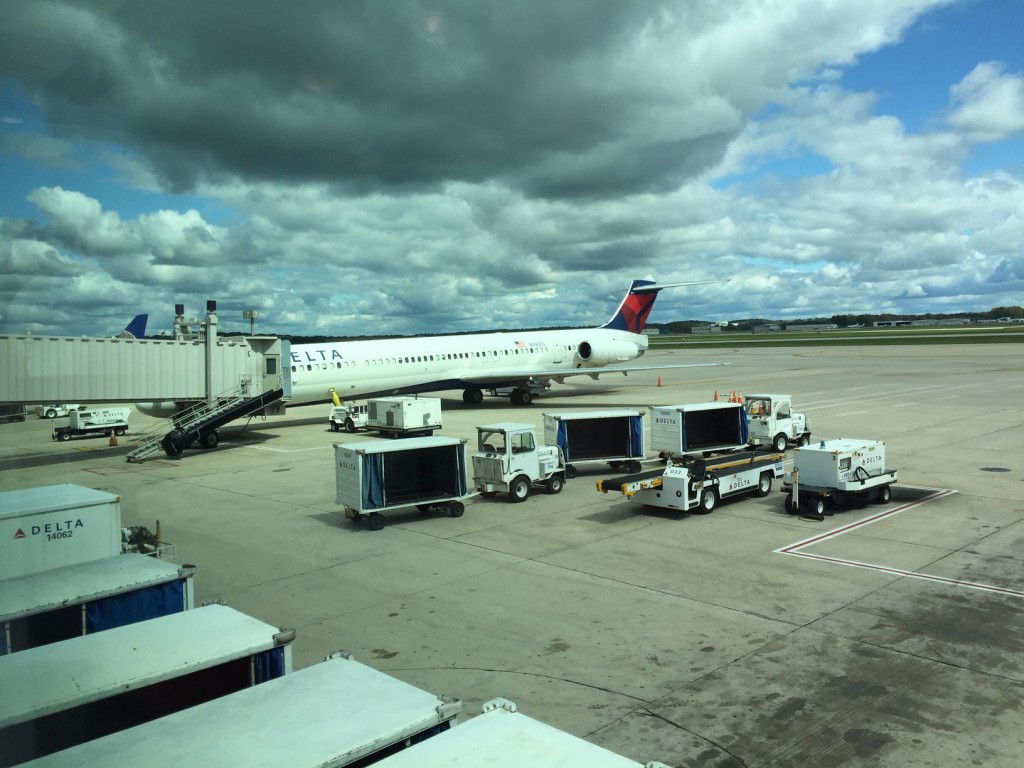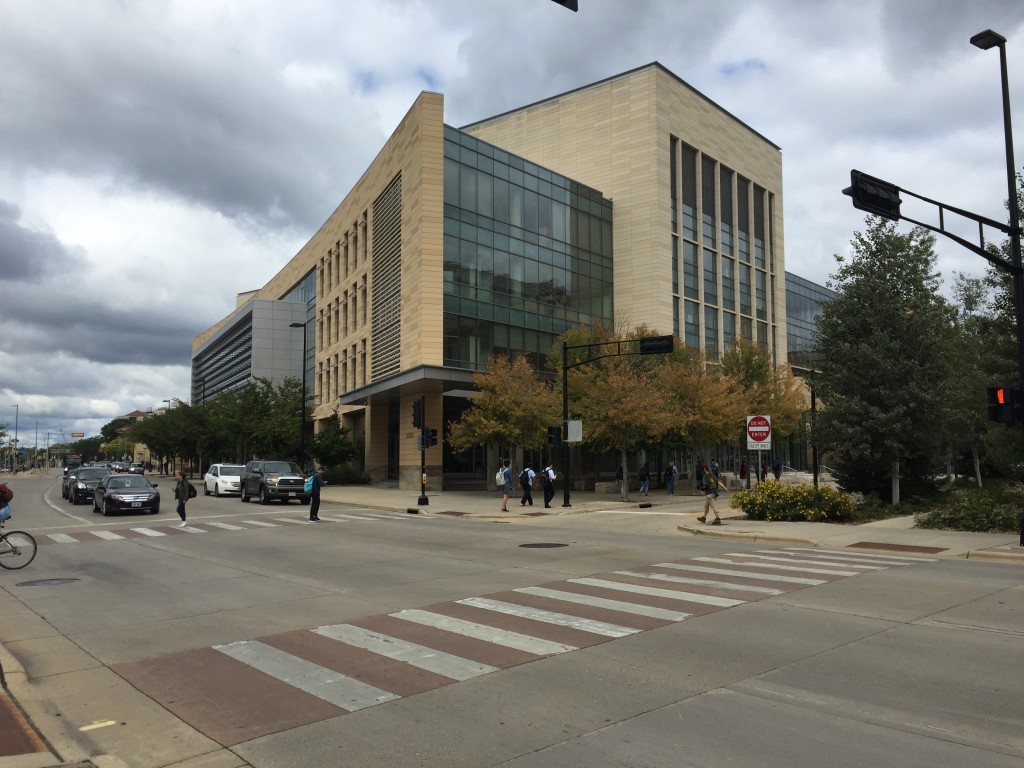Some media coverage
Here’s a nice popular summary of the paper that I published with Emil Burman last month on how temperature affects the microbial model community THOR. I think Miles Martin at The Academic Times did a great distilling my ramblings into a coherent story. Good job Miles!
I did not know about The Academic Times before this but will keep an eye on this relatively new publication aiming to popularize and distill scientific content for other scientists.
In other popularization-of-science-news, I got interviewed last week by New Scientist about a very exciting paper that came out this week on travelers picking up antibiotic resistance genes in Africa and Asia. The study was quite similar to what we did back in 2015, but used a much larger data set and uncovered that there are many, many more resistance genes that are enriched after travel than what we found using our more limited dataset. Very cool study, and you can read the New Scientist summary here.
Published paper: Blastocystis and the intestinal microbiota
Yesterday, BMC Microbiology published a paper which I have co-authored with Joakim Forsell and his colleagues in at Umeå University. The paper (1) investigates the prevalence and subtype composition of Blastocystis – a eukaryotic microbe commonly present in the human intestine – among the 35 Swedish university students that we investigated for antibiotic resistance before and after travel to the Indian peninsula or Central Africa using shotgun metagenomics, and published in 2015 (2). In this paper, we used the same metagenomic data, but to assess the impact of travel on Blastocystis carriage and to understand the associations between Blastocystis and the bacterial gut microbiota. We found that 46% of the students carried Blastocystis before travel and 43% after. The two most commonly identified Blastocystis subtypes were ST3 and ST4, accounting for 20 of the 31 samples positive for Blastocystis. Interestingly, we detected no mixed subtype carriage in any individual, and all the ten individuals with a typable subtype before and after travel maintained their initial subtype.
Furthermore, we found that the composition of the gut bacterial community was not significantly altered between Blastocystis-carriers and non-carriers. Curiously, Blastocystis was accompanied with higher abundances of the bacterial genera Sporolactobacillus and Candidatus Carsonella. As perviously observed (3), Blastocystis carriage was positively associated with higher bacterial genus richness, and negatively correlated to the Bacteroides-driven enterotype. We, however, took this observation further, and could show that these associations were both largely driven by ST4 – a subtype commonly described in Europe – while the globally prevalent ST3 did not show such significant relationships.
The persistence of Blastocystis subtypes before and after travel indicates that long-term carriage of Blastocystis is common. The associations between Blastocystis and the bacterial microbiota found in this study could imply a link between Blastocystis and a healthy microbiota, as well as with diets high in vegetables. However, we cannot answer whether the associations between Blastocystis and the microbiota are resulting from the presence of Blastocystis per se, or are a prerequisite for colonization with Blastocystis, which are interesting opportunities for follow-up studies.
I think this type of data reuse for completely different questions is highly useful, and I am very happy that Joakim Forsell and his colleagues contacted me to hear if it was possible to do a Blastocystis screen of this data. The full paper can be read here.
References
- Forsell J, Bengtsson-Palme J, Angelin M, Johansson A, Evengård B, Granlund M: The relation between Blastocystis and the intestinal microbiota in Swedish travellers. BMC Microbiology, 17, 231 (2017). doi: 10.1186/s12866-017-1139-7 [Paper link]
- Bengtsson-Palme J, Angelin M, Huss M, Kjellqvist S, Kristiansson E, Palmgren H, Larsson DGJ, Johansson A: The human gut microbiome as a transporter of antibiotic resistance genes between continents. Antimicrobial Agents and Chemotherapy, 59, 10, 6551–6560 (2015). doi: 10.1128/AAC.00933-15 [Paper link]
- Andersen LO, Bonde I, Nielsen HB, Stensvold CR: A retrospective metagenomics approach to studying Blastocystis. FEMS Microbiology Ecology, 91, fiv072 (2015). doi: 10.1093/femsec/fiv072 [Paper link]
Leaving Madison



A good-looking version of the Travel and Resistance paper
The paper we published in August on travelers carrying resistance genes with them in their gut microbiota has now been typeset and got proper volume and issue numbers assigned to it in Antimicrobial Agents and Chemotherapy. Take a look at it, I personally think it’s quite good-looking.
Also, if you understand Swedish, here is an interview with me broadcasted on Swedish Radio last month about this study and the consequences of it.
The new citation for the paper is:
- Bengtsson-Palme J, Angelin M, Huss M, Kjellqvist S, Kristiansson E, Palmgren H, Larsson DGJ, Johansson A: The human gut microbiome as a transporter of antibiotic resistance genes between continents. Antimicrobial Agents and Chemotherapy, 59, 10, 6551-6560 (2015). doi: 10.1128/AAC.00933-15 [Paper link]
Travel and resistance paper in the news
There have been quite a lot of buzz this week around the travel paper we published earlier this month. Twitter aside, the findings of the paper has also been covered by a range of news outlets, both in Sweden and internationally. Today, I was on Swedish radio talking resistance problems for about ten minutes (listen here; in Swedish). Here’s a few takes on the story I gathered around the web:
Science Daily
Business Standard
Z News
Englemed Health News
Läkemedelsvärlden (in Swedish)
Sveriges Radio (in Swedish)
Göteborgs-Posten (in Swedish)
Published paper: Travel spreads resistance genes
Earlier today, my most recent paper (1) became available online, describing resistance gene patterns in the gut microbiota of Swedes before and after travel to the Indian peninsula and central Africa. In this work, we have used metagenomic sequencing of the intestinal microbiome of Swedish students returning from exchange programs to show that the abundance of antibiotic resistance genes in several classes are increased after travel. This work reiterates the findings of several papers describing uptake of resistant bacteria (2-8) or resistance genes (9-11) after travel to destinations with worse resistance situation.
Our paper is important because it:
- Addresses the abundance of a vast range of resistance genes (more than 300).
- Finds evidence for that the overall relative abundance of antibiotic resistance genes increased after travel, without any intake of antibiotics.
- Shows that the sensitivity of metagenomics was, despite very deep sequencing efforts, not sufficient to detect acquisition of the low-abundant (CTX-M) resistance genes responsible for observed ESBL phenotypes.
- Reveals a “core resistome” of resistance genes that are more or less omnipresent, and remain relatively stable regardless of travel, while changes seem to occur in the more variable part of the resistome.
- Hints at increased abundance of Proteobacteria after travel, although this increase could not specifically be linked to resistance gene increases.
- Uses de novo metagenomic assembly to physically link resistance genes in the same sample, giving hints of co-resistance patterns in the gut microbiome.
The paper was a collaboration with Martin Angelin, Helena Palmgren and Anders Johansson at Umeå University, and was made possible by bioinformatics support from SciLifeLab in Stockholm. I highly recommend reading it as a complement to e.g. the Forslund et al. paper (12) describing country-specific antibiotic resistance patterns in the gut microbiota.
Taken together, this study offers a broadened perspective on how the antibiotic resistance potential of the human gut microbiome changes after travel, providing an independent complement to previous studies targeting a limited number of bacterial species or antibiotic resistance genes. Understanding how resistance genes travels the globe is hugely important, since resistance in principle only need to appear in a pathogen once; improper hygiene and travel may then spread novel resistance genes across continents rapidly (13,14).
References
- Bengtsson-Palme J, Angelin M, Huss M, Kjellqvist S, Kristiansson E, Palmgren H, Larsson DGJ, Johansson A: The human gut microbiome as a transporter of antibiotic resistance genes between continents. Antimicrob Agents Chemother Accepted manuscript posted online (2015). doi: 10.1128/AAC.00933-15 [Paper link]
- Gaarslev K, Stenderup J: Changes during travel in the composition and antibiotic resistance pattern of the intestinal Enterobacteriaceae flora: results from a study of mecillinam prophylaxis against travellers’ diarrhoea. Curr Med Res Opin 9:384–387 (1985).
- Paltansing S, Vlot JA, Kraakman MEM, Mesman R, Bruijning ML, Bernards AT, Visser LG, Veldkamp KE: Extended-spectrum β-lactamase-producing enterobacteriaceae among travelers from the Netherlands. Emerging Infect. Dis. 19:1206–1213 (2013).
- Ruppé E, Armand-Lefèvre L, Estellat C, El-Mniai A, Boussadia Y, Consigny PH, Girard PM, Vittecoq D, Bouchaud O, Pialoux G, Esposito-Farèse M, Coignard B, Lucet JC, Andremont A, Matheron S: Acquisition of carbapenemase-producing Enterobacteriaceae by healthy travellers to India, France, February 2012 to March 2013. Euro Surveill. 19 (2014).
- Kennedy K, Collignon P: Colonisation with Escherichia coli resistant to “critically important” antibiotics: a high risk for international travellers. Eur J Clin Microbiol Infect Dis 29:1501–1506 (2010).
- Tham J, Odenholt I, Walder M, Brolund A, Ahl J, Melander E: Extended-spectrum beta-lactamase-producing Escherichia coli in patients with travellers’ diarrhoea. Scand. J. Infect. Dis. 42:275–280 (2010).
- Östholm-Balkhed Å, Tärnberg M, Nilsson M, Nilsson LE, Hanberger H, Hällgren A, Travel Study Group of Southeast Sweden: Travel-associated faecal colonization with ESBL-producing Enterobacteriaceae: incidence and risk factors. J Antimicrob Chemother 68:2144–2153 (2013).
- Kantele A, Lääveri T, Mero S, Vilkman K, Pakkanen SH, Ollgren J, Antikainen J, Kirveskari J: Antimicrobials increase travelers’ risk of colonization by extended-spectrum betalactamase-producing enterobacteriaceae. Clin Infect Dis 60:837–846 (2015).
- von Wintersdorff CJH, Penders J, Stobberingh EE, Oude Lashof AML, Hoebe CJPA, Savelkoul PHM, Wolffs PFG: High rates of antimicrobial drug resistance gene acquisition after international travel, The Netherlands. Emerging Infect. Dis. 20:649–657 (2014).
- Tängdén T, Cars O, Melhus A, Löwdin E: Foreign travel is a major risk factor for colonization with Escherichia coli producing CTX-M-type extended-spectrum beta-lactamases: a prospective study with Swedish volunteers. Antimicrob Agents Chemother 54:3564–3568 (2010).
- Dhanji H, Patel R, Wall R, Doumith M, Patel B, Hope R, Livermore DM, Woodford N: Variation in the genetic environments of bla(CTX-M-15) in Escherichia coli from the faeces of travellers returning to the United Kingdom. J Antimicrob Chemother 66:1005–1012 (2011).
- Forslund K, Sunagawa S, Kultima JR, Mende DR, Arumugam M, Typas A, Bork P: Country-specific antibiotic use practices impact the human gut resistome. Genome Res 23:1163–1169 (2013).
- Bengtsson-Palme J, Larsson DGJ: Antibiotic resistance genes in the environment: prioritizing risks. Nat Rev Microbiol 13:396 (2015).
- Larsson DGJ: Antibiotics in the environment. Ups J Med Sci 119:108–112 (2014).
